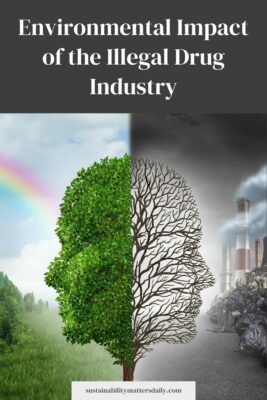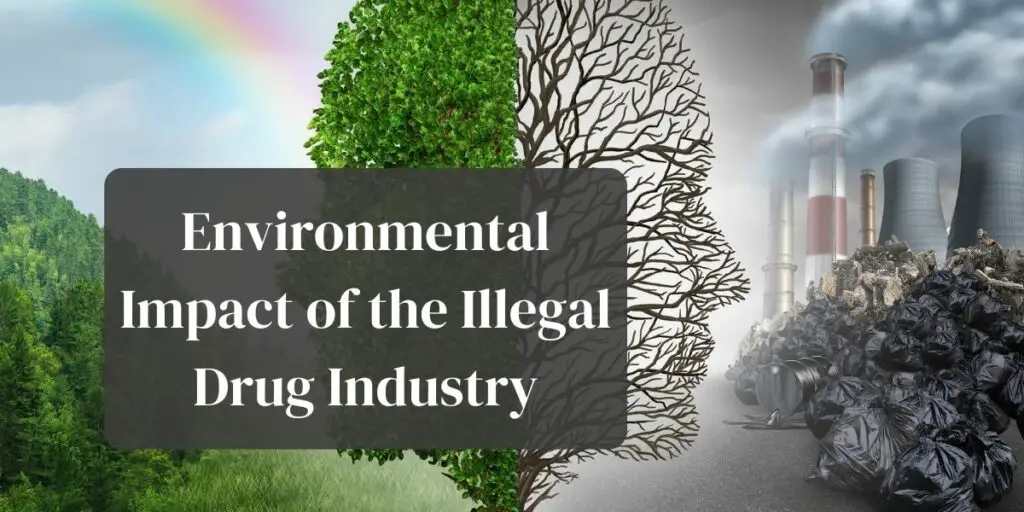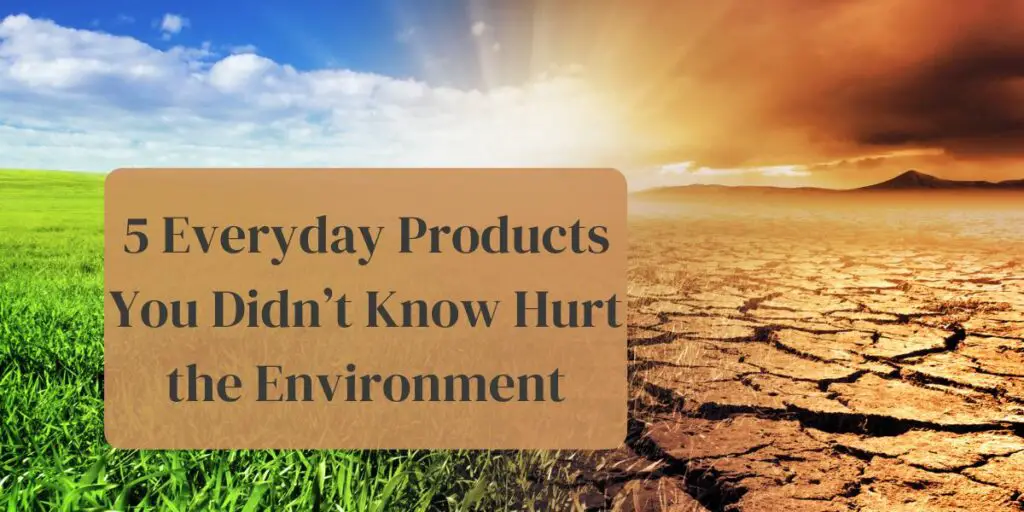Most of us are aware of the health impact of drug use. To be fair: it is quite often communicated through TV shows, movies and government-funded education. But we do not discuss the environmental impact of producing, distributing and using drugs. I decided to look at various scientific report to conclude what drugs actually do to our planet.
In order to make this article as user-friendly as possible, I chose to divide it into three different parts:
Producing drugs
It would be natural to assume that chopping down trees and boiling liquid cocaine in the Columbian jungle would have an environmental impact. Also, it is known that several people are growing cannabis out in the wild in order to not get caught.
The logistics
Getting the illegal substance from one place to another will demand some sort of transportation. As you might be aware of: this leaves a carbon footprint.
Using drugs
Once the drug has been sold to the end-consumer: would it still make some negative environmental impact? Let us research that and get back to you with an answer.
Let us start.
PS! And just to be clear: we are talking about ILLEGAL DRUGS in this article. You know…heroin, cannabis and MDMA. I am not talking about the environmental impact of the sleep medicine that can be bought at Walmart.

Table of Contents
- What is the environmental impact of producing drugs?
- Getting the drug from A to B
- But how can human drug consumption affect the environment?
- Conclusion
What is the environmental impact of producing drugs?
Everyone that has seen the award-winning “Narcos” on Netflix knows what a drug factory looks like. If you haven’t seen it: I can already tell you that it does not look very good.
Most of the negative environmental impact from drugs production is related to chemicals.
Chemicals from drug production and its environmental impact
These are just some of the ways that drug labs can pollute the nature through dangerous chemicals:
1) Particles can end up in water during manufacturing. Both sea creatures and humans might be harmed.
2) Drugs that for some reason will not be consumed by people will end up in our water supply through sinks, toilets and landfills.
3) Some drug labs, especially those in South America, are very often built in the middle of the rainforest. As there are a lot of exotic animals in these areas, they are all in danger. Needless to say, drugs is not exactly very friendly towards wildlife.
PS! While doing research for this article, I tried to Google “how much cocaine does it take to kill a polar bear?”. Could not find any good answers based on scientific research.
Another thing that springs to my mind is the fact that people actually put these chemicals into their bodies. Every time I hear the sentence “But MDMA isn’t that dangerous”, I feel that I am getting dumber. You’re literally putting heavy chemicals into your body, mate!
Video of a chemichal drug factory in China
As a previous China expat, I tend to look into all the “big international news” that comes out from that country. In 2019, BBC published an article in regards to a police raid on an illegal drug factory in South China.
Just from the video below you can see that this stuff isn’t healthy to get into your body (nor is it good for the environment):
Example: How producing cannabis demands huge energy consumption
A couple of years ago I read a quite funny story in a newspaper in my home country. Some guy had been taken by the police and charged for growing cannabis plants at home. From what I can remember, he was facing between 3 and 10 years in prison if he was guilty. And guilty he was!
I guess you are curious to find out how the police caught him?
You see, Norwegian winters can be quite cold. As a result of that, snow will cover most of the rooftops across the whole country. However, one magical thing happened this winter. Despite covering all the other roofs in the neighborhoods, it was one that constantly kept snow-free.
When the police knocked on the door and tried to figure out what happened close to the roof, they found a huge (and warm!) cannabis farm. Bizarre.
The whole point by telling this story is to make you understand that cannabis farms do demand a constant and intense heat process, which will use a lot of electricity.
PS! The newspaper story did not say anything about whether or not the cannabis farm was running on renewable energy. 🙂
Picture: how a British cannabis farmer was caught due to lack of snow on her roof
I was able to find a Youtube video that featured a VERY similar story from the UK. Some 38 year old woman chose to grow a large weed forest in her rooftop apartment. The problem was that during the cold British winter, the police figured out that there’s no snow on her roof…which lead to further investigation. This is how her house looked like the day she was caught and sent to prison:

Getting the drug from A to B
Just like exotic fruits, drugs is something that is very often produced really far away from where it is consumed. It is quite a long journey from the jungle in Columbia to the nightclub in London – where the drug eventually is consumed in a dirty bathroom by some wannabe-Gordon-Gekko-finance-guy.
So how does this long journey affect the environment? Which transportation methods are used and how far does meth, cannabis and opium travel from the drug factory to the user?
Needless to say, there are no official numbers to answer these questions. However, there are loads of sources trying to find out exactly how much drugs that is being transported around the world every day.
A website called Worldometers.info is the closest we can get to an answer. Here you can find a small article that compiled information from various scientific sources. But they also write that measuring the illegal drug market “is extremely difficult”.
So what do the numbers tell us?
What most people consider the best report on this topic was published in 1998. It is called “Economic and Social Consequences of Drug Abuse and Illicit Trafficking“ and was published by UN. If you read the whole report, which I just did, you will not see any direct numbers about how much drug that is being shipped from one place to another. But based on the market size, we can find a decent estimate. In 1998, United Nations concluded that the total illegal drugs market had “a turnover of around $400 billion per annum is considered realistic”. That is quite high.
We could use this number to try to calculate how many big trucks and cars that transport drugs every day. But let’s don’t – as the number we would come to would not be accurate anyway.
On the other side, that could potentially be a super cool bachelor degree topic to write about within environmental science. Try to make a projection of the environmental cost of illegal drug transportation…and I can guarantee that your professor would be very interested in your work! 🙂
What is a narco-submarine?
The last point I want to make in this paragraph about logistics is about narco-submarines. If you have seen Narcos (sorry to those who haven’t), you know how rich you can get in the drug business. Now that some criminals do make so much money that they are able to build their own customized submarines, you know that the drug police got a quite difficult job.
You can read more about narco-submarines here: https://en.wikipedia.org/wiki/Narco-submarine
So why is this an environmental problem?
Well, you see…sometimes the police detect those submarines. And instead of getting caught, the captain of the ship has been ordered to sink the ship and just accept a painful death below the surface. Yes, it is brutal. But it happens. When tons of drugs, oil and metal hits the bottom of the sea, that will instantly have a quite bad environmental impact.
This is a brilliant video of a brave South American police offer that literally jumps onto a drug submarine, which in the end made them able to track down a huge cocain gang in Columbia:
But how can human drug consumption affect the environment?
It might sound disgusting, but through what leaves the body when you are on the toilet. When you add something “dangerous” to the sewer system, the environment is in trouble. After all, it is an endless circle. And guess what? A lot of the cocaine do end up in our water supply after a nice travel through our body and toilet pipes.
Drug consumption is probably not so damaging for the environment. On the other hand, it can be quite damaging to your body.
Conclusion
As you can see, illegal drugs do have a significant negative impact on the environment. You won’t find any official numbers on how much drugs that is being produced or how many cars that are used to transport drugs. But based on what we know about the amount of illegal drugs sold globally, we are able to conclude that this industry contributes with a lot of different types of pollution.
I guess we can say that “local pollution” types is more likely to occur (a lot of electricity from producing cannabis, water supplies being polluted by cocaine cartels, etc.) in comparison to CO2 emissions.



Funny that you mention that submarine that went down outside South America. I know that drug can be a huge social problem, but never thought of it as an environmental issue. Absolutely madness that people go that far in order to destroy their own bodies.
After working several years as a border control officer, I know the miles people are going to smuggle drugs
As a border patrol officer, I can imagine that you’ve literally seen it all. However, your job is more or less aimed towards making your country safer – not necessarily punish people because they destroy the planet. 🙂
I still enjoy the fact that you found this article and spent time commenting on it.